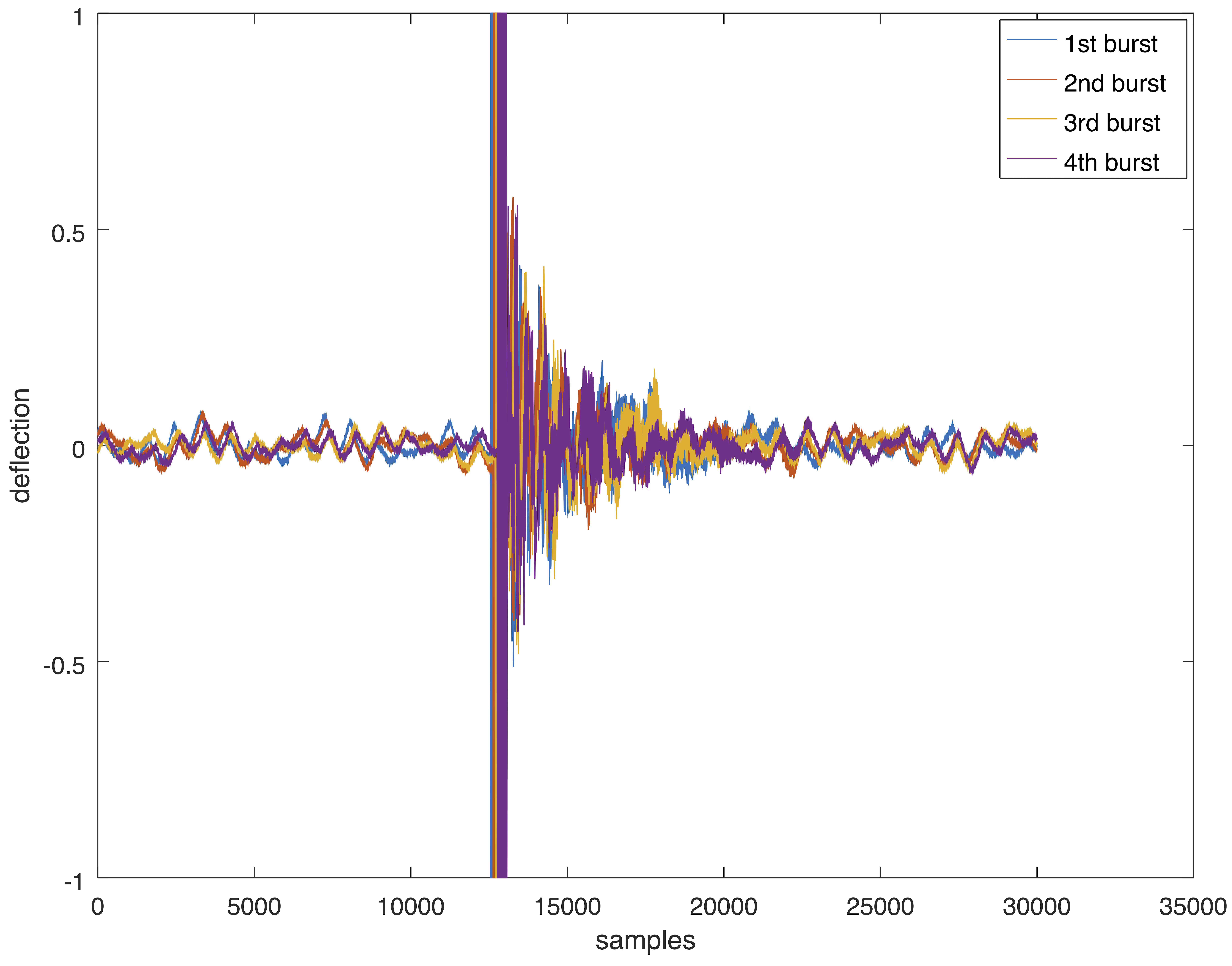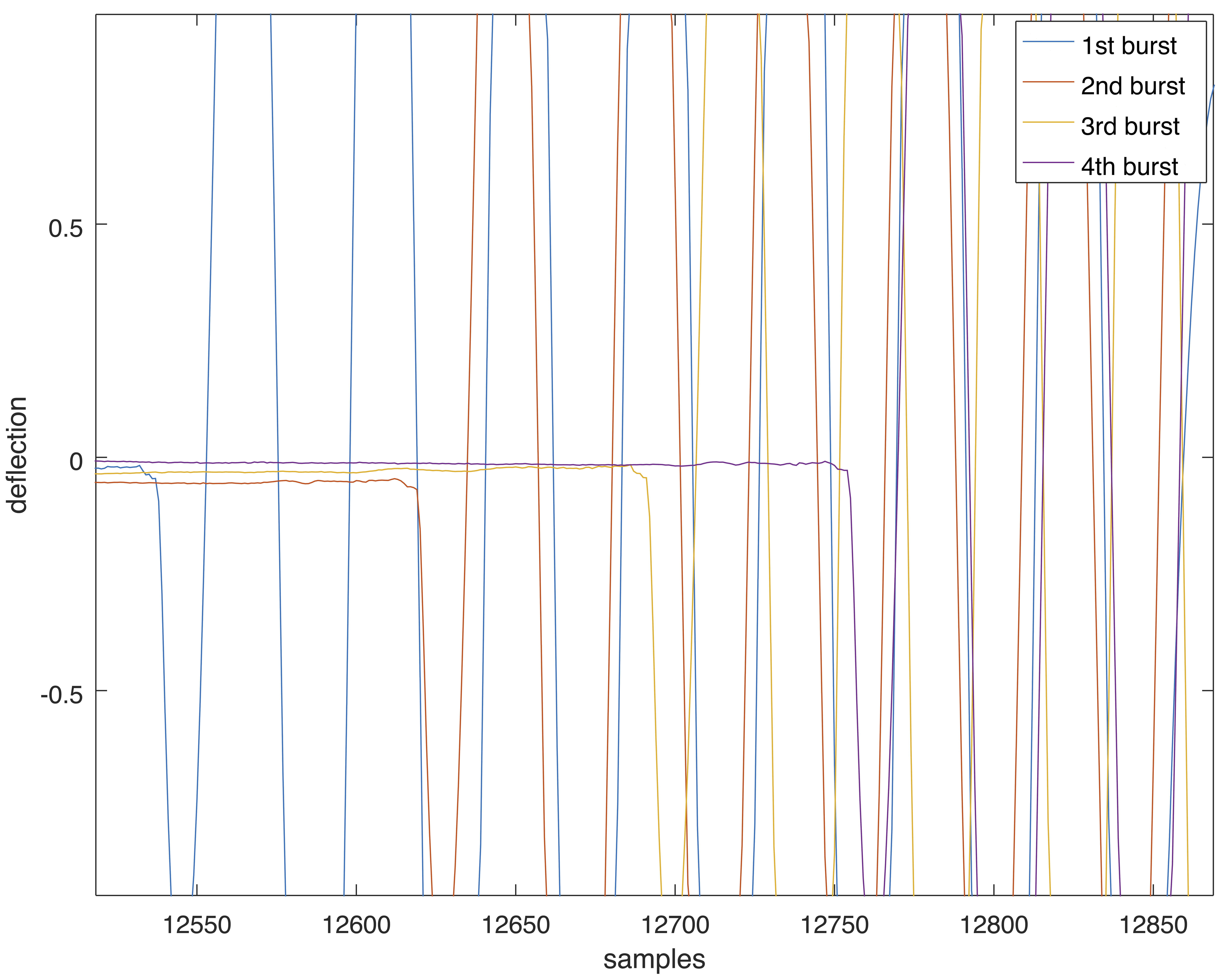Flaws in audio at listening position – transmission signal elongation
Flaws in audio at listening position – transmission signal elongation
Theory explanation 
Impact on listening 
What can I do? When … an audio system 
Theory explanation 
Explanation of TestHiFi’s measurement output data and the theory about the TestHiFi criteria.
Measurement data explanation:
TestHiFi measures in three positions average, to increase listening subjective, psychoacoustic relevance. It measures standard industry criteria. The measurement data shows you detailed identified weaknesses of the received sound at listening position.
The transmission signal elongation related criteria results indicate identified difference in length of the signal sent versus the length of the signal recorded.
Critical setups with too much difference in signal length between sent and recorded signal, might influence pitch of the music and disable for time and phase related TestHiFi measurements.
The difference between sent and recorded signal length rather indicate digital processing artifacts leading to longer, only in rare cases leading to shorter recorded signals than sent ones.
The indicated result shows the difference between sent and recorded TestHiFi test signal length in percentage and milli seconds. Positive values indicate the recorded test signal being longer than the sent test signal.
Beside others we measure time differences for different frequency groups. If the signal is elongated, it effects those two elements, at least. Bluetooth signal elongation would affect the timing in a recording. Bluetooth signal elongation would also affect the frequency in a recording.
Theory:
When playing back a piece of music, the source track has a certain length. In rare cases, the played back track length is slightly different to the source track length.
Keeping manly all other influencing parameters unchanged, a change in track length effects the pitch of the music. This effect can impact the sound quality, although only in rather Rare cases critically. However in some cases, especially when using a bluetooth connection, it is very hearable at the beginning of a music track.
Bluetooth effects
The difference of signal length between the source signal and the recorded signal can be caused by various mostly digital effects. Those more usual effects might be cutoffs, interrupts or compressions. Rather unusual effects can be caused by the signal processing of wireless connections. Such effects can be elongation, a slowdown of the playback. While a continuing consistent elongation during the whole playback would consistently reduce the pitch of the music, a shortening, an accelerated playback would increase the pitch of the music.
Looking into the issue deeper, reveals, especially with the elongation caused by the bluetooth protocol, it is not consistent. The elongation is bigger at the beginning of the signal. Better to say after any start of a playback the elongation starts and during playing the music the elongation decreases.
Here are some pictures taken from one of the measured elongations of an average Bluetooth speaker.
The first picture shows a quite simplistic test signal. Every second there is a burst of a single frequency. The same burst every second over and over again.

A signal with 48000Hz sample rate with a burst exactly every second has obviously 48000 samples from one burst start to the next burst start. A constant distance between each burst of 48000 samples.
The second picture shows the first 4 burst of a recording, moved together onto the first bursts position. By subtracting 48000 samples from the position of the second burst position the second burst should move exactly onto the first burst position. Continuing with the third and the fourth burst, all bursts should be exactly moved onto the first burst position. Of course, this holds only true, in case the distance between two bursts is exact one second, respectively exact 48000 samples.
 It is quite difficult to see that they actually come close together, but not exactly.
It is quite difficult to see that they actually come close together, but not exactly.
The third picture is a zoom into the recorded and moved together bursts on the start of the first burst. Here you can see they have a difference between about 82 down to 63 samples. If the signal wouldn’t be elongated, the four bursts would be exactly at the same position. The amount of elongation decreases over playback time. The first burst has an elongation of 82 samples, the last burst has an elongation of 63 samples. After further playback the elongation reduces to zero. Therefore the later bursts in the signal actually are exactly at the same position. Their distance is exactly 48000 samples as in the sent signal.
 The measured differences of the first four bursts in that sample measurement are 48082, 48072, 48063 samples, instead of 48000 samples.
The measured differences of the first four bursts in that sample measurement are 48082, 48072, 48063 samples, instead of 48000 samples.
Where transmission signal elongation appeared and where not
We built the app to be used with bluetooth, airplay, wire, or even, for the new version of the app, with an offline signal. With wireless connections we experience lots of delaying effects, because the system needs time to process between the start of the replay and the moment you first hear something. Also, cutoff effects, which cause the first part of the signal being cutoff, i.e. you won’t hear it.
While using a wired connection, we did not experience any of those issues, although it might happen due to other digital processing than wireless transmission also. Using the offline option in the new app version showed the same effect. Offline in that case is the transmission of the test signal not by the app (mobile device) but e.g. using a file played from a different system, e.g. from a streaming computer. That again offers the options to transmit via wire or via bluetooth. Using bluetooth, it reveals the same elongation effect, via wire it did not.
Impact on listening 
I mean, who cares the first part of a music piece, just the first few seconds and only a minor effect, right?
However, elongation in that way, slows down the playback. A bid like with cassette players in the 80’ when their battery life came to an end. Slowing down the playback increases the playback time for a piece of music. In case a frequency of let’s say 1000Hz is played for one second, there are one thousand full sinus waves in that second played. If the signal playback would be slowed down to two seconds, the thousand waves would be played in two seconds. But that means we hear only 500 waves per second. This is a frequency of 500Hz, i.e we hear 500Hz instead of 1000Hz.
Are those signal processing issues of a size that we hear them, maybe. We had systems that slowed down and speeded up again. We repeated it over and over and could easily hear it and reproduce it. It is a bid like the modern version of the hurdy-gurdy, the Bluetooth version of the hurdy-gurdy like in the old times when we gave our cassettes a good whack to reduce “wow and flutter”.
What can I do? When … an audio system 
What can I do when either buying, setting up or listening to an audio system?
… buying …
Choose your system in accordance with your listening preference
Potential systems with lower quality Bluetooth protocols tend to have more high chances for such effects on the playback. Higher quality protocols might reduce those effects.
… setting up …
Depending on the system you might choose wired connections over wireless, airplay over bluetooth and higher quality bluetooth protocols over lower ones.
… listening to …
When listening to music and if you are using a system with a hearable effect at the start of a track, you could fade over from music track to music track to eliminate new starts. This would reduce the effects.
(This measurement criteria relates to measurement at listening position- future version of TestHiFi)